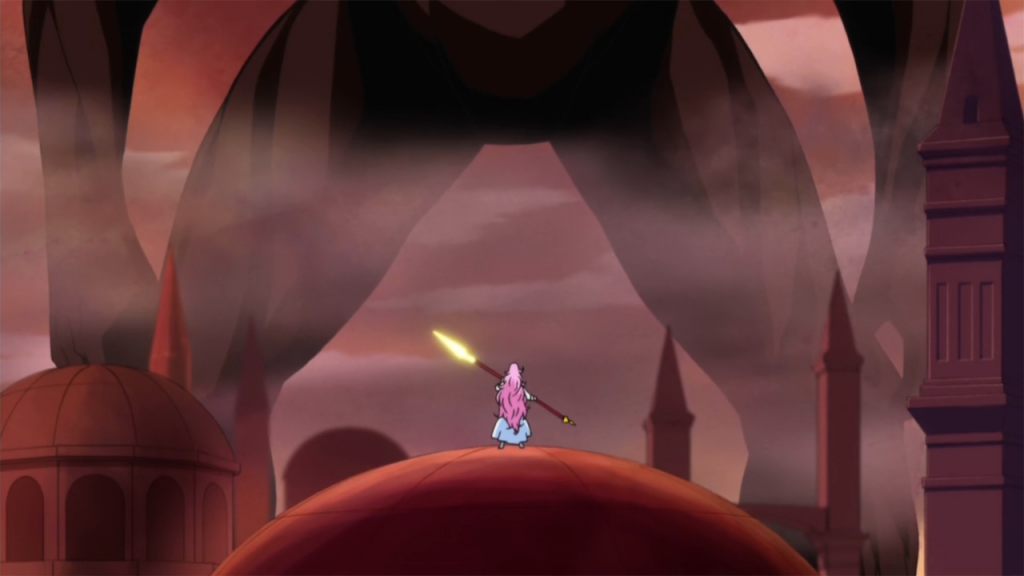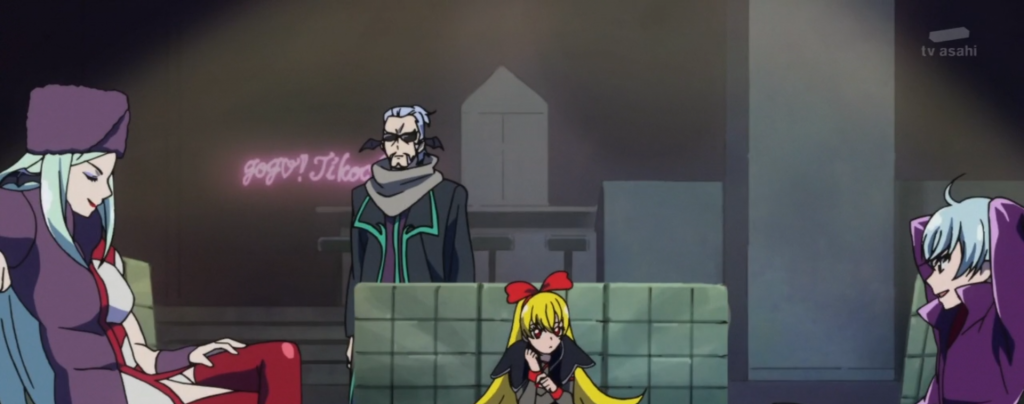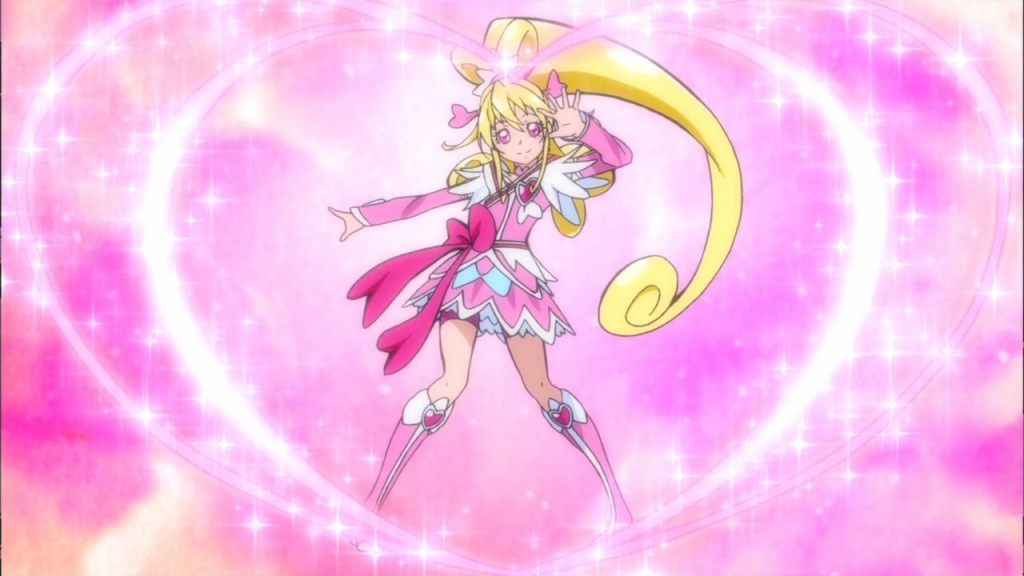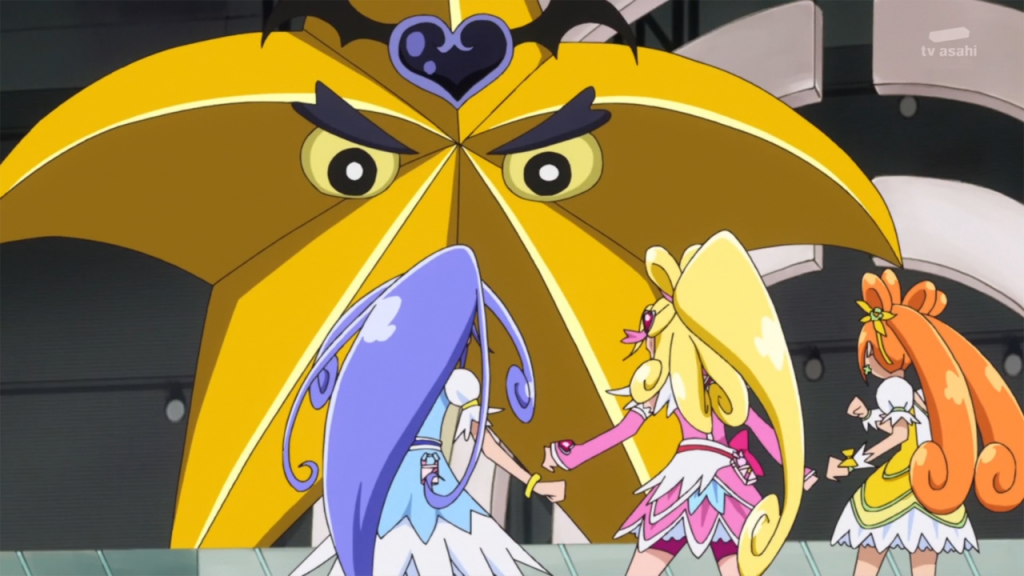Studio: Toei
Length: 49 Episodes x 25 minutes
Season: Winter 2012/2013 – Winter 2013/2014
Release: TV (TV Asahi)
DokiDoki! PreCure is the tenth iteration of the popular Pretty Cure magical girl franchise, which is primarily targeted at young girls. While each iteration follows a different set of girls with a different overarching storyline, the franchise itself comes across as a tale of morals; encouraging love, happiness and kindness to flourish in the personalities of its target audience. This can be generally off-putting for adults, but the aspect of cute girls battling monsters has seen the franchise become popular with the adult male ‘otaku’ market.
DokiDoki! PreCure is at first one of the more accessible entries in the franchise, thanks to its early focus on the story and setting, rather than morals. The Trump Kingdom was a realm of refined beauty until it suffered a grizzly fate, as King Selfishness arose and with the power of his subordinates began to eradicate love from the hearts of the people, turning them into vile monsters. Princess Ange turned to face the evil king, backed up by her loyal guard of PreCure warriors, but one by one they were defeated. As a last resort, the Princess and the single remaining PreCure, Cure Sword, try to escape to the human world. In the chaos of their escape, the two are separated. Cure Sword arrives in the human world, with no sign of the Princess. Will she be able to find her and save the Trump Kingdom from its doom, or is it all too late?
The first few episodes follow magical girl tradition in forming the PreCure team, with student council president Aida Mana as team leader Cure Heart, her best friend Hishikawa Rikka as Cure Diamond, and the daughter of the boss of the Yotsuba Corporation, Yotsuba Alice, as Cure Rosetta. Cure Sword, masquerading as idol Kenzaki Makoto joins the team a bit later on. While fitting into character archetypes (helps everyone; best friend; rich girl; tsundere), the main girls are generally likable and only occasionally have dumb moments that would annoy adult viewers. After these introductory episodes, the story moves along at a good pace, as the girls battle against the monsters known as Selfishness (Jikochu), which are born from the selfish desires of humans that are unleashed by the enemy generals Ira, Marmo, Bel, Leva and Gula. Each Pretty Cure iteration has the same type of these pantomime villain characters, and DokiDoki! bases them on five of the deadly sins: wrath, greed, sloth, envy and gluttony. While Leva and Gula enter the fray as filler material, the other three develop well over the course of the series and become lovable characters in their own right.
The plot and character development climaxes halfway through the series, as we are introduced to the daughter of King Selfishness, Regina, and the fifth Precure, Cure Ace. Following this, the series starts to take a downward turn as we get a large amount of filler episodes in order to take the series to its full 49 episode run. In the previous Pretty Cure iteration, Smile PreCure!, some of these moral-inducing filler episodes could produce interesting character development and an added sense of depth, but by having these episodes so late on in the game in DokiDoki!, we already know all the details about the cast – so there is a lack of progression. Typically, the PreCure evolve and gain new moves over the course of the series, but in DokiDoki! this type of progression and development is limited to two consecutive blocks. While this linearity can be an issue in the Pretty Cure format, DokDoki! seems to show it more than others.
Visually, DokiDoki! PreCure is typical of other kids’ magical girl series, with bright, bold colours in a cutesy style. Transformation scenes follow in the same vein, with the signature PreCure colours of pink, blue, and yellow supplemented with purple and red; accompanied by the playing card motifs that represent the series’ main theme. While the available budget for the show doesn’t impress, the visual quality is just what you would expect – nicely done, but in a simple way. The CGI ending animation does look odd however – the general art style doesn’t fit the plastic-looking models very well.
The main mass of monsters from the Trump Kingdom take the appearance of animals such as bats and gorillas, while those created in the human world take the standard approach of creating a monster out of everyday objects and things that people desire or have an emotional attachment to. Some are quite creative and clever in their design, while others don’t make much of an impression; but as a generic baddie they do the job.
While the fights are fun, there is more of a focus on the relationships between the characters, particularly Mana and Regina, and Makoto and Princess Ange. Thankfully after the majoritively static second half there are a lot of big revelations in the finale, which comes crashing along with a big wallop. While making for a good final spectacle, it’s admittedly too sudden, as if the producers either forgot why they were building up the PreCure’s powers, or had more of a story to tell in between the two events.
Despite this slap-dash finish, DokiDoki! PreCure remains a decent magical girl series with a well-constructed story and fun, likable characters. While the simple structure shows it’s very much aimed at children, hardcore magical girl fans are sure to lap it up. The filler segments in the second half may cause casual viewers to turn off, however.
6/10 – Fair
